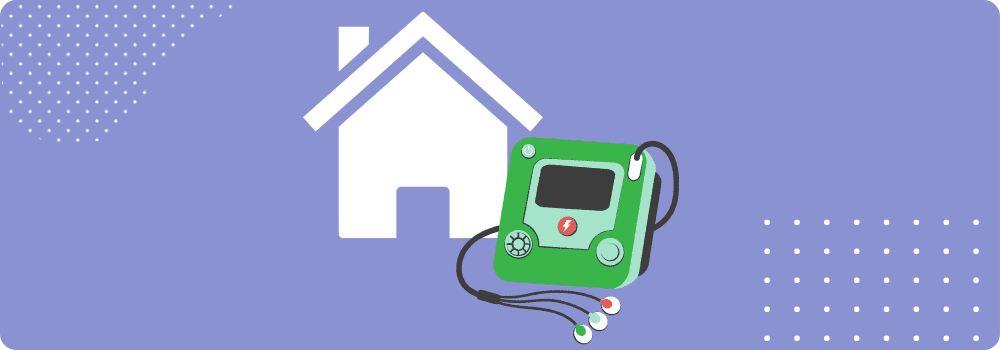
Having an Automated External Defibrillator, or AED, can significantly increase the chances of survival during a sudden cardiac arrest, and having one at home is crucial in emergencies while waiting for an ambulance to arrive. An AED in your home is there to help you act quickly when time is of the essence.
70% of sudden cardiac arrests happen in the home, and having an AED there can greatly improve a person’s chance of survival. An AED can analyze a patient’s heart rhythm and prompt the user to deliver a shock, which can restart the heart and restore normal heart rhythm. In fact, the shock is so effective that it can reverse even serious arrhythmias.
With a home AED, you can be the help before help arrives. The average national ambulance response time is 7 minutes in urban areas with longer response times for rural areas. Considering the likelihood of surviving sudden cardiac arrest declines by 10% for each minute that passes without help, it is important to take the necessary steps to saving a life, including using an AED, as quickly as possible.
If you’ve been working out at the gym, or shopping at the grocery store, you may have seen an AED. These devices are used to help resuscitate people who have suffered sudden cardiac arrest.
While you’re likely to see AEDs in places like malls, offices, and stadiums, there aren’t nearly as many in homes. When someone is experiencing sudden cardiac arrest, having an AED at home can increase chances of survival while waiting for EMS to respond to the scene.
You can get an AED for your home without a prescription. An FDA-approved model, the Philips HeartStart Home Defibrillator, costs approximately $1,200 and has audio instructions to help in an emergency. Recertified AEDs are also an option, there are just as effective and more affordable. When you purchase an AED, it is important to get the appropriate training to have the skills and confidence to use it in an emergency.
A home AED will come with complete instructions for use, and it’s a good idea to review those on occasion. You’ll need to replace the electrode pads and batteries as needed, which is specified by the manufacturer. Also, if your device starts beeping, check the information function on the AED or contact the manufacturer.
There are other reasons to consider an AED for the home, too. If you or a loved one has a family history of cardiac issues, there may be a higher risk for sudden cardiac arrest in your family. An AED can provide peace of mind and increase chances of survival. If you have a specific condition that puts you at high risk of sudden cardiac death, such as a genetic heart rhythm problem or coronary artery disease, your health care provider may recommend an implantable cardioverter-defibrillator, or pacemaker, instead.